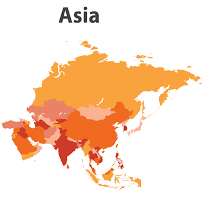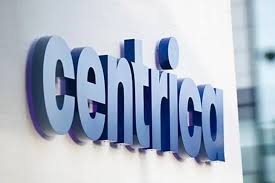Fidelity Asian Values plc (LON:FAS) has announced its final results for the year ended 31 July 2025.
Highlights:
- The Board has announced a final dividend of 20.5 pence per share, an increase of 41.4% from 2024.
- During the twelve-month period ended 31 July 2025, Fidelity Asian Values PLC reported a Net Asset Value (NAV) return of +12.4% and ordinary share price total return of +17.0%.
- The Comparative Index, the MSCI All Countries Asia ex Japan Small Cap Index, produced a total return of +7.1% over the same timeframe.
- Taiwan Semiconductor Manufacturing Company, De Grey Mining and Crystal International were the top three contributors to performance relative to the Index.
Financial Highlights
| Assets as at 31 July | 2025 | 2024 |
| Gross Asset Exposure | £470.2m | £442.9m |
| Net Market Exposure | £416.6m | £416.2m |
| Total Shareholders’ Funds | £402.7m | £392.0m |
| NAV per Ordinary Share1 | 604.69p | 551.66p |
| Gross Gearing1 | 16.8% | 13.0% |
| Net Gearing1 | 3.4% | 6.2% |
| ————— | ————— | |
| Share Price and Discount data at 31 July | ||
| Ordinary Share Price at year end | 564.00p | 496.00p |
| Year high | 566.00p | 542.00p |
| Year low | 454.00p | 476.00p |
| Discount to NAV per Ordinary Share at year end1 | 6.7% | 10.1% |
| (Discount) year low/Premium | 14.5% | 11.9% |
| (Discount) year high | 6.7% | 2.2% |
| ————— | ————— | |
| Results for the year ended 31 July | ||
| Revenue Return per Ordinary Share1 | 22.51p | 14.24p |
| Capital Return per Ordinary Share1 | 40.34p | 2.06p |
| ————— | ————— | |
| Total Return per Ordinary Share1 | 62.85p | 16.30p |
| ========= | ========= | |
| Ongoing Charges for the year to 31 July | 0.95% | 0.95% |
| Variable Element of Management Fee3 | 0.14% | 0.19% |
| Ongoing Charges including Variable Element of Management Fee for the year to 31 July1 | 1.09% | 1.14% |
| ========= | ========= |
1 Alternative Performance Measures. See below
2 The variable element of the management fee is calculated over a rolling three year period with reference to the Benchmark Index.
Chairman’s Statement
I am delighted to report that the year ended 31 July 2025 has been a rewarding one for our shareholders, both in absolute terms and relative to the Comparative Index (the MSCI All Countries Asia ex Japan Small Cap Index (net) total return (in sterling terms).
In the year under review, the Company’s net asset value (“NAV”) total return was +12.4% (2024: +3.2%), while the Comparative Index saw a total return of +7.1% (2024: +13.7%). The share price total return to shareholders was +17.0% (2024: -1.7%), assisted by a narrowing in the share price discount to NAV, which moved from 10.1% on 31 July 2024 to 6.7% at the year end.
It may seem somewhat remarkable that a year that has seen so many negative headlines globally – from escalating military conflicts to trade wars – could have turned out so positively for our shareholders in terms of investment performance. The fact that your Company has been able to do so well against a backdrop of turmoil and extreme volatility speaks to the fact that the fund offers investors excellent risk diversification. Many of its portfolio holdings are focused on serving their domestic markets and are therefore not very exposed to global trade. While US trade tariffs have sparked a decline in the dollar, your Company has relatively little US dollar exposure, which has proved beneficial. Furthermore, Nitin Bajaj and Ajinkya Dhavale (your Portfolio Managers) focus on finding well managed businesses with strong competitive niches, stable balance sheets and little debt, which has had an insulating effect. This is enhanced when investor sentiment turns away from higher-risk, potentially higher-reward situations. The Portfolio Managers’ strategy has served shareholders very well over the longer-term: over five years to the end of July 2025, the Company’s cumulative NAV total return of 87.2% has beaten the Comparative Index by 15.3%, while the share price total return of 92.1% has done even better, outperforming the Index by 21.3%.
You will find detailed information on the Company’s portfolio and its performance in the Portfolio Managers’ Review below. In brief, however, their strategy remains bottom- up, contrarian and value-focused, which has led them in recent years to focus more on well-managed Chinese companies and less so on India, where a spike in investor interest has seen valuations rise to levels that your Portfolio Managers see as inflated and unsustainable.
Board strategy day
Last year, as your incoming Chairman, I arranged for the Board to undertake a strategy day where we went back to basics to explore all the factors that independent non-executive directors of an investment company can and should be influencing. This year – which has been a busy one in the investment trust world in terms of both the market backdrop and the level of corporate activity – we decided to repeat this worthwhile exercise. Among the topics for discussion were the competitive landscape, trends towards consolidation in the investment company market, discount management, distribution, dividends, fees and charges. As I outline elsewhere in this statement, several actions have been taken as a result of these discussions, including a more proactive pace of share buybacks, and a change in cost allocation that facilitates the payment of an increased dividend to shareholders.
Market consolidation continues to be a theme at the forefront of many investors’ minds, with size increasingly being seen as a key factor in attracting the interest of professional investors, such as wealth managers, as well as being beneficial in terms of economies of scale. We are encouraged by the Company’s position of strength in the market, and while your Board notes the Company’s net assets have passed the £400m level, we continue to scan the horizon for opportunities to optimise the position of your Company.
Due diligence trip
In March 2025, the Board visited Asia on its two-yearly due diligence trip. We began the visit in Singapore, where Nitin and Ajinkya are based, meeting with them and members of the wider Fidelity team, including analysts, traders, risk managers and capital markets experts, as part of our responsibility for overseeing the Company’s investment approach and portfolio management functions. Once again, we were impressed by the team’s strength and depth, and by the quality of the analyst team’s ideas and the rigour of their approach. In a focused and differentiated portfolio, new investment ideas have to be particularly compelling in order to make the cut, and it was most illuminating to observe the level of constructive challenge between Nitin, Ajinkya and the wider team when discussing potential portfolio purchases. We joined Fidelity’s locally based teams in Singapore, Shanghai, Guangzhou and Shenzen for internal and external company meetings. Your portfolio has a relatively large exposure to Chinese companies, so it was important for us to scrutinise the attractions of these businesses and the analytical rigour underpinning our investments on behalf of both our shareholders and the Board. We met with companies from a range of sectors and were impressed by the calibre of their management teams and governance standards, their focus on shareholder value and long-ranging vision, their focus on balance sheet strength, and competitive and creative mindsets even across traditional businesses. As a result of this trip, we can confidently confirm that we believe the Company is in the best possible hands.
Discount management and share repurchases
Global stock markets have remained unsettled during the year under review. Consequently, share price discounts to NAV across the investment trust universe have remained wide by historical standards, averaging 14.9% in the 12 months to 31 July 2025. Against this backdrop, your Company’s discount to NAV has also seen a degree of volatility, ranging from 14.5% at its widest to 6.7% at its narrowest. In aggregate, however, the discount narrowed over the year, from 10.1% at the prior year end to 6.7% on 31 July 2025. It has also been substantially narrower on average compared with the Company’s Asia Pacific Smaller Companies peer group, at 9.8% versus 14.8% for the peers. Over the course of the year, the Company repurchased 4,463,497 ordinary shares (6.3% of the issued share capital; 1.0% in 2024), at a cost of £22.5m. Since then and up to the latest practicable date of this document, 2,362,486 shares have been repurchased as part of the Company’s active and ongoing discount management strategy. The primary purpose of share buybacks is to limit discount volatility, and at the Annual General Meeting (“AGM”) on 26 November 2025 the Board will seek shareholder approval to renew the annual authority to repurchase up to 14.99% or, in the event that the shares are trading at a premium to the Company’s NAV, to allot up to 10% of the ordinary shares in issue.
The timing of repurchases of ordinary shares are made at the discretion of the Broker, within guidelines set by the Board and considering prevailing market conditions. Shares will only be repurchased in the market at prices below the prevailing NAV per ordinary share, there-by adding to the NAV per ordinary share. In the reporting year, share repurchases added 0.7% to the NAV (2024: 0.1%). Until 31 July 2025, shares repurchased were held in Treasury and these can only be reissued at NAV per ordinary share or at a premium to NAV per ordinary share. By the year end, shares held in Treasury exceeded 10% of the total issued share capital, and so the Board decided that with effect from 1 August 2025, all shares repurchased will be for cancellation, and this has been the case for all share repurchases carried out since that date. In addition, since the year end, 822,911 shares already held in Treasury have been cancelled.
Marketing and promotion
Your Board remains keenly aware that share buybacks alone are unlikely to eliminate a persistent discount to NAV; discounts are a function of supply and demand and, as such, increasing demand is at least as important as absorbing excess supply. As I mentioned last year, our newest Director, Lucy Costa Duarte, has a strong track record in marketing and distribution. During the review year, she undertook a ‘deep dive’ into Fidelity’s marketing and PR strategy to understand if it represents good value for money and is demonstrating returns. Her work gave the Board confidence that Fidelity is doing the right things to maintain and increase your Company’s profile. We have discussed the allocation of resources and made some small changes, but her feedback on the overall marketing and PR picture was overwhelmingly positive.
While some coverage comes as a direct result of the efforts of Fidelity and external PR partners, in other cases it arises naturally as a consequence of your Company’s strong long-term track record. We were very pleased this year to have been included on the Association of Investment Companies’ annual ‘ISA millionaires’ list for a third consecutive time. This list looks at the returns that investors could have achieved by investing their full ISA allowance each year since ISAs were introduced in 1999 (and reinvesting any dividends). A total investment of £326,560 in your Company over the period from 6 April 1999 to 31 January 2025 would have grown to £1,128,271 – an impressive result that illustrates the value of investing for the long-term. While returns from equity investments are always likely to fluctuate, your Company’s enduring presence on this list – even in a period of relatively poor performance such as the previous year – underscores the rewards available to patient long-term investors in differentiated strategies.
During the year, we have continued to work with Fidelity and external partners to increase the Company’s profile through digital and print advertising, sponsorship, events, direct marketing and press coverage. A third-party research provider, Kepler Partners, produces regular notes on the Company, which are distributed widely and made available on the Company’s website. The focus on reaching both retail and professional (wealth managers) audiences is evident in the makeup of our share register, with 39% of our shares owned by direct investors through platforms, and 47% by wealth managers on behalf of their clients.
Dividend
The Board is pleased to recommend a final dividend of 20.5 pence per share for the year ended 31 July 2025, which represents a 41.4% increase over the previous year, for approval by shareholders at the AGM to be held on 26 November 2025. The dividend will be paid on 11 December 2025.
Partly in response to shareholder feedback, during the year your Board took a careful look at the allocation of costs between the Company’s revenue and capital accounts. Historically, 100% of management fees and finance costs have been charged to the revenue account. However, as the investment strategy principally targets capital growth, we felt it was right to consider whether a greater allocation to the capital account would be more appropriate. Having discussed the matter at our Board strategy day (see above) and undertaken a detailed review of our peers both among Asia Pacific Smaller Companies investment trusts and in the wider Asia Pacific sector, we concluded that we should change the allocation to a 75:25 split between the capital and revenue accounts. The removal of 75% of the management fees and finance costs from the revenue account has resulted in a step-change in the level of dividends proposed for the year ended 31 July 2025.
We would remind shareholders that portfolio dividend income continues to be an output rather than an aim of the investment process, and accordingly the level of future dividends for the Company’s shareholders may vary.
Your Portfolio Managers invest principally for long-term capital growth of your investment, but their value-oriented investment style tends to lead them towards unleveraged and cash- generative businesses. The increase achieved in portfolio dividend income together with the re-allocation of costs referred to above has resulted in the dividend per share declared by the Company more than doubling over the last four years.
Gearing
As an investment trust, your Company has the ability to deploy additional money (through borrowing or the use of derivative instruments) to invest on behalf of its shareholders, known as gearing. This can enhance returns for investors when performance is positive, although, on the flipside, it can also amplify losses in a falling market. The level of gross gearing is directly proportional to the investment opportunities that your Portfolio Managers see. When they are optimistic about the outlook and there is a good supply of compelling investment ideas, then the Company will tend to be more geared.
At the period end, gross gearing was 16.8% (2024: 13.0%) and net gearing was 3.4% (2024: 6.2%).
Rather than using bank borrowing (which can be expensive depending on the prevailing interest rate environment and is often deployed across a portfolio on a pro-rata basis), the Company’s gearing is achieved using contracts for difference (“CFDs”). These are a type of derivative instrument, implemented on a stock-by-stock basis, allowing Nitin and Ajinkya to get additional exposure to their best ideas. Each year, your Board reviews the use of CFDs, and we have again concluded that at the present time they remain a more efficient and flexible form of financing over secured or unsecured debt, as well as enabling your Portfolio Managers to be fleet of foot in the deployment of gearing. We are fortunate that Fidelity has the infrastructure and capability to allow the use of CFDs in the portfolio; few other management groups can offer this.
Use of short positions
Fidelity’s capability in derivative instruments is also what allows your Portfolio Managers to ‘short’ stocks, which has again had a positive impact on returns in the year under review. Ajinkya, in particular, has a strong background in this area. A short position is taken on the view that the price of a stock or the value of an index will go down rather than up. Short positions are limited to a maximum of 10% of the Company’s portfolio and do not usually exceed 10 stocks. However, while relatively small in scope, this additional tool has materially added to the Company’s performance since its introduction in late 2019, and particularly so in the year under review, to the tune of 0.4%. Total short exposure as at 31 July 2025 was 6.7% of net assets (2024: 3.4%).
BOARD OF DIRECTORS
Following Michael Warren’s retirement at last year’s Annual General Meeting (“AGM”) in November 2024 and Lucy Costa Duarte’s election at that AGM, there have been no changes to the Board in the period under review. We can now look forward to a prolonged period of stability under the current group of Directors, whose tenures to date range from one to six years. While we believe that your Board has a good mix of essential qualities and a diverse set of relevant backgrounds, it is a worthwhile discipline to undergo external challenge and assessment to ensure that we have all the appropriate skills necessary to ensure the good governance of your Company. As such, and in line with best practice, we have been undergoing a third-party board effectiveness review, the results of which will have been considered and decided upon by the time of the 2025 AGM. We remain open to challenge and committed to listening to and doing the best job for our shareholders, something we hope is evident in measures such as the active management of the Company’s discount to NAV and our careful consideration of cost allocation, and its attendant effect on your Company’s dividend (see ‘Dividend’ section above). Part of the Board’s remit is to represent the views of the Company’s shareholders, and we would like to encourage you to engage with the Board either by contacting us via the Company Secretary or by attendance at the AGM.
ARTICLES OF ASSOCIATION
The Board has undertaken its scheduled review of the Company’s Articles of Association (the “Articles”) with assistance from our external legal adviser. The changes proposed to the Articles are set out in the Directors’ Report section of the Annual report. Shareholders will be asked to approve these changes at the AGM on 26 November 2025.
INVESTMENT OBJECTIVE AND INVESTMENT POLICY
The Board has also reviewed the Company’s Investment Objective and Investment Policy and we are proposing two minor amendments. The wording of the restriction in relation to unlisted investments has been simplified and it is also proposed to move the reference to the Comparative Index from the Investment Objective to the Investment Policy. These changes are set out in Directors’ Report section of the Annual report. Shareholders will be asked to approve these changes at the AGM on 26 November 2025.
ANNUAL GENERAL MEETING
The AGM of the Company will be held at 11.00 am on Wednesday, 26 November 2025. The meeting will once again be a hybrid format, with online attendance available, however I hope to see as many of you as possible in person on the day. Full details of the meeting are below and in the Notice of Meeting in the Annual Report. Items of special business to be proposed at the AGM are detailed in the Directors’ Report section of the Annual Report.
OUTLOOK
Nitin and Ajinkya are fundamentally bottom-up investors, which means their investment decisions are informed by detailed company analysis rather than the prevailing market mood. And so, while the geopolitical backdrop is fractious, your Portfolio Managers remain commit-ted to their proven long-term investment approach. They continue to see good prospects for their portfolio of undervalued, quality businesses, about which you can read more in their review that follows. In an uncertain world, those with the courage to continue to steer their course are surely most likely to reach their desired destination.
CLARE BRADY
Chairman
16 October 2025
ANNUAL GENERAL MEETING – WEDNESDAY, 26 NOVEMBER 2025 AT 11:00 AM
The AGM of the Company will be held at 11.00 am on Wednesday, 26 November 2025 at 4 Cannon Street, London EC4M 5AB (nearest tube stations are St Paul’s or Mansion House) and virtually via the online Lumi AGM meeting platform. Full details of the meeting are given in the Notice of Meeting in the Annual Report.
For those shareholders unable to attend in person, we will live-stream the formal business and presentations of the meeting online.
Nitin Bajaj and Ajinkya Dhavale, the Portfolio Managers, will be making a presentation to shareholders discussing the performance of the past year and the prospects for the year to come. The Portfolio Managers and the Board will be very happy to answer any questions that shareholders may have. Copies of their presentation can be requested by email at investmenttrusts@fil.comor in writing to the Secretary at FIL Investments International, Beech Gate, Millfield Lane, Lower Kingswood, Tadworth, Surrey KT20 6RP.
Properly registered shareholders joining the AGM virtually will be able to vote on the proposed resolutions. Please see Note 9 to the Notes to the Notice of Meeting in the Annual Report for details on how to vote virtually. Investors viewing the AGM online will be able to submit live written questions to the Board and the Portfolio Manager and these will be addressed at an appropriate juncture during the meeting.
Further information and links to the Lumi platform may be found on the Company’s website at www.fidelity.co.uk/asianvalues. On the day of the AGM, in order to join electronically and ask questions via the Lumi platform, shareholders will need to connect to the website https://meetings.lumiconnect.com.
Please note that investors on platforms, such as Fidelity Personal Investing, Hargreaves Lansdown, Interactive Investor or AJ Bell Youinvest, will need to request attendance at the AGM in accordance with the policies of your chosen platform. They may request that you submit electronic votes in advance of the meeting. If you are unable to obtain a unique IVC and PIN from your nominee or platform, we will also welcome your online participation as a guest. Once you have accessed https://meetings.lumiconnect.comfrom your web browser on a tablet, smartphone or computer, you will need to enter the Lumi Meeting ID which is 100-596-124-635. You should then select the ‘Guest Access’ option before entering your name and who you are representing, if applicable. This will allow you to view the meeting and ask questions, but you will not be able to vote.
Further information on how to vote across the most common investment platforms is available at the following link: https://www.theaic.co.uk/how-to-vote-your-shares
PORTFOLIO MANAGERS’ REVIEW
Nitin Bajaj was appointed as the Portfolio Manager of Fidelity Asian Values PLC on 1 April 2015. He is based in Singapore and has over 23 years of investment experience. He is also the Portfolio Manager for the Fidelity Asian Smaller Companies Fund as well as the Fidelity China Focus Fund. He first joined Fidelity in 2003 as an Investment Analyst and then took over the Fidelity India Special Situations Fund and subsequently started the Fidelity India Value Fund. He managed these funds until November 2012, when Fidelity decided to sell its India business.
Ajinkya Dhavale, the Company’s Co-Portfolio Manager, supports and works closely with Nitin Bajaj. He has extensive experience in Asian markets and companies and shares a common investment approach and complementary investment experience with the Portfolio Manager. He has over 17 years of investment experience. He originally joined Fidelity as an Investment Analyst in 2011, covering the Auto, Cement, Telecommunications and Property sectors. He is also Co-Portfolio Manager of the Fidelity Asian Smaller Companies Fund.
QUESTION 1
How has the Company performed in the year to 31 July 2025?
ANSWER
As mentioned in the Chairman’s statement, over the year ended 31 July 2025, the Company’s net asset value (“NAV”) total return was +12.4% versus the Comparative Index (MSCI All Countries Asia ex Japan Small Cap Index (net) total return (in sterling Terms)) return of +7.1%. The share price total return for the year was +17.0% due to a narrowing of the discount to NAV.
Our investment process is centred on owning good businesses which are run by trustworthy management teams and buying them only when we have an ample margin of safety, meaning that we consider the market value of the company to be lower than its intrinsic value. This strategy often leads us to adopt contrarian positions, as undervalued businesses are more likely to be found in sectors or geographies that are out of favour. Following this philosophy, we currently have a significant portion of the Company’s portfolio allocated to China and Indonesia, while exposure to India and Taiwan is substantially lower than the Index. Geographic exposures reflect bottom up stock picking and had a positive impact on performance as the market began to recognise the intrinsic value of several Chinese holdings we own.
The Company has benefited from its allocation to Chinese equities over the last year. Although the companies we own in China did well compared to the rest of Asia, they underperformed the Chinese market, which was predominantly driven by highly valued, more speculative areas such as technology, biotechnology and new consumption themes. Most of our holdings in China are concentrated in sectors such as consumer goods, real estate and industrials. Stock selection in Indonesia proved unrewarding in the past year, as the country remained overlooked by investors despite strong economic fundamentals, albeit in the context of political volatility. We have largely maintained our positioning in our preferred holdings given their favourable risk-reward profile over the medium to long-term.
In our opinion, 12 months (whether good or bad) is a short period of time over which to judge a portfolio’s performance. It must be put in the context of longer-term performance, in line with our longer-term investment horizon. Since Nitin took over the management of the Company’s assets in 2015, the share price total return has been +163.2%, or +9.8% annualised, versus the MSCI All Country Asia ex Japan Small Cap Index (net) total return (in sterling terms) of +105%, +7.2% annualised.
Question 2
What stocks have been the main drivers of performance during the 12-month review period and why?
Answer
Our list of top contributors relative to the Index during the 12-month period was well diversified across markets and sectors, with Taiwan Semiconductor Manufacturing Company (“TSMC”), De Grey Mining, and Crystal International making up the top three.
· TSMC, the world’s largest semiconductor foundry, emerged as the leading contributor over the period. Its shares advanced after the company reported record-breaking financial results, showcasing its ability to capitalise on the AI boom.
· De Grey Mining, a mid-sized Australia-listed gold miner, was acquired at a premium by Northern Star Resources. We owned De Grey Mining as its assets included the world-class Hemi Gold project under development – giving us leverage to both development upside as well as the gold price.
· Crystal International produces apparel at its factories mostly located in Vietnam, for renowned brands such as UNIQLO, Levi’s and GAP. We have owned Crystal for several years, and it has been a consistent performer as management has executed well and our entry valuation at a P/E ratio of 6x was very reasonable.
Meanwhile, our largest relative detractors were all from India and Indonesia, the two markets that lagged the regional Asian small cap index over the past year.
· Axis Bank, the third largest private sector bank in India, was the most significant detractor as the lender saw an increase in non-performing assets. Its management has taken steps to strengthen underwriting standards, while the bank continues to trade at relatively low valuations compared to peers. We continue to own the position and have increased it when its share price weakened.
· IndusInd Bank, India’s fifth-largest private sector bank, performed poorly because of weaknesses in underwriting that our due diligence did not fully identify. This is a reminder that no matter how deep our due diligence process is, there are always things that can go wrong, which is why buying businesses whose valuations offer a margin of safety is very important. We continue to hold the stock as it trades at about a 20% discount to its book value.
· Bank Negara has performed well in past years but did poorly in the last 12 months. This was due to profit pressure from increased competition for deposits, as well as a mild deterioration in asset quality in Indonesia. We continue to own shares in Bank Negara given its solid franchise and a valuation that offers a healthy margin of safety.
Question 3
How have you utilised the Company’s structure as an investment trust this year? Has it been beneficial?
Answer
A key benefit of the structure is the ability to hold smaller, less liquid names, without needing to manage potential outflows. We have also continued to utilise gearing and the derivative toolset available to the Company, which proved beneficial over the last 12 months. Our level of gearing remains a function of the number of investment ideas we find – it increases when we see more ideas than money, and it reduces (or we keep a higher cash balance) when we do not find as many ideas.
In the last 12 months, the Company’s average net exposure was 103.3%. We had +13.7% average exposure to long stock futures over the review period, which contributed 250 basis points to the Company’s relative performance. The short book, where we had -3.9% average exposure, contributed 38 basis points. Meanwhile, our stock holdings (+93.6% average exposure) made a +356 basis points positive contribution. These performance contributions are all relative to the Company’s Comparative Index.
Question 4
US import tariffs announced in 2025 have been a consideration this year. What impact have tariffs had or not had on the Company’s portfolio during the review period?
Answer
So far, the impact on our portfolio has been marginal, as tariffs have only just started taking effect. Our primary concern is that tariffs and related uncertainties present a real risk to global growth. They are likely to affect both the level of consumption in the US and corporate capital investment decisions worldwide.
We continue to look for both risks and opportunities that may arise from the change in global trading order and structures.
Question 5
The Company’s portfolio is still overweight in China. How does the regulatory landscape in China affect how you find investment opportunities there?
Answer
Regulatory changes take place in all markets around the world. In the current environment, since April 2025, the rate and pace of regulatory change has been particularly notable in the US.
Our experience in China has been that government policy aims to support public welfare. Businesses that operate within the rules and do not exploit their customers tend not to face much interference in the operation of their company.
China’s industrial policy is very focused on capacity creation and provides a platform for Chinese companies to strive for global competitiveness. This has led to oversupply and hyper-competition in a large number of industries. However, this is a well-advertised and slow-moving phenomenon, hence we are able to incorporate such factors into our analytical framework when conducting our research on companies.
Question 6
Are there any areas in China that are more attractive today than they were last year?
Answer
Yes, in our opinion there are many companies in China that still trade significantly below intrinsic value. Some of these are just small traditional businesses (advertising, recruitment, event management, dairy farms, etc.) that have tended to be overlooked by the market, while others are in areas going through a cyclical downturn, such as property, consumer staples and industrials.
Having said that, performance of the Chinese equity market over the last year has been dominated by thematic exposures. Sectors that are currently in vogue, such as AI-driven technology, biotechnology and electric vehicles, have experienced significant gains. In contrast, sectors we consider more aligned to the ‘real economy’, including consumer goods, real estate and industrials, have not gained much.
Consequently, this selective rally has widened the intersectoral valuation gap within Chinese small cap equities. The chart below illustrates how the disparity between the sector with the highest forward Price to Book ratio and the one with the lowest has become more pronounced, especially in the past six months.
While the market has been enthused by these new-age sectors, we have continued to find good businesses with a meaningful margin of safety in more traditional sectors.
Question 7
Looking beyond China, where do you currently see the best opportunities?
Answer
We continue to find promising investment opportunities in Indonesia. Indonesia is the third largest economy in the region, following China and India, with a strong demographic profile, prudent management of public finances and very strong household balance sheets. Our exposure to Indonesia is well diversified across sectors such as financials, building materials, industrials and consumer businesses, all of which support sustainable returns with a sufficient margin of safety.
Additionally, as bottom-up investors, we continue to uncover idiosyncratic investment opportunities in other parts of the region. For instance, in Taiwan, we have invested in Pacific Hospital Supply Company, a manufacturer of medical consumables. Despite being a small player, its new management is driving market share growth at a pace faster than the c.US$80bn industry, which typically grows at a mid-single-digit rate. The stock trades at 16x its projected 2026 earnings and offers a 5% dividend yield.
Similarly, in Thailand, we hold a position in Mega Lifesciences, a manufacturer of generic medicines. Most of its revenue stems from ‘nutraceuticals’ or wellness drugs, with the remainder from prescription drugs and over-the-counter medicines. The company’s strong distribution network across ASEAN, together with its product pipeline and in-house manufacturing, confers competitive advantages, resulting in higher margins compared with peers. Its management is more agile and flexible than multinational competitors, enhancing its effectiveness in sales and promotions. The stock trades at 12x its projected 2026 earnings, with a 5.5% dividend yield.
Question 8
How do you assess current valuations relative to historical averages? Is now an interesting time for Asia?
Answer
The average valuation for the MSCI AC Asia ex Japan Small Cap Index is now above its historical average and cannot be considered empirically ‘cheap’. However, this average level masks a wide variation between value stocks and growth stocks, as shown in the chart below.
This dispersion in valuation can also be observed between the valuation of stocks we own and the market average. The P/E of the fund is 10.4x while that of the market is 17x. This reflects Fidelity’s deep research network, which enables us to find high quality businesses that are currently being overlooked by other investors.
Question 9
What key risks do you face in the current environment, and how do you mitigate these in the Company’s portfolio?
Answer
Macro and geopolitical events are not central to our decision-making, but we realise we cannot ignore them entirely, especially in the current environment. Companies exist within business cycles, and they are impacted by geopolitical events. Therefore, we try to factor both these into our decision-making, predominantly at the single stock level but also at the portfolio risk level. These give us guardrails rather than being the main driver of decision-making. Stock picking is the mainstay of the investment process and has always been its strength, and we feel we are better placed if we ‘stick to our knitting’ rather than becoming distracted by world events.
Question 10
Finally, looking forward, what are the things that excite you the most that you would like to share with shareholders?
Answer
We are excited by the team we work with – both the regional analyst team at Fidelity and especially the small cap team. Our performance is in part an outcome of the hard work and insights of Fidelity’s research team, and we are grateful for their help.
We also feel comfortable with our portfolio. We own a basket of good quality businesses, as evidenced by their return on equity (ROE), and we own them at a significant discount to market valuations. Think of it as owning a house that provides you with a higher rental income at a substantially lower capital cost than the neighbourhood. Who would not want that?
We do not have a forecast of market returns, and we do not wish to indulge in such speculation. Instead, we continue to focus on investing in good businesses, led by competent and honest management teams, available at a valuation that offers a suitable margin of safety. This time-tested approach has delivered sustainable performance for the Company over the long-term, and we are confident that it will continue to do so well into the future.
NITIN BAJAJ AJINKYA DHAVALE
Portfolio Manager Co-Portfolio Manager
16 October 2025
Fidelity Asian Values Plc (LON:FAS) provides shareholders with a differentiated equity exposure to Asian Markets. Asia is the world’s fastest-growing economic region and the trust looks to capitalise on this by finding good businesses, run by good people and buying them at a good price.






































